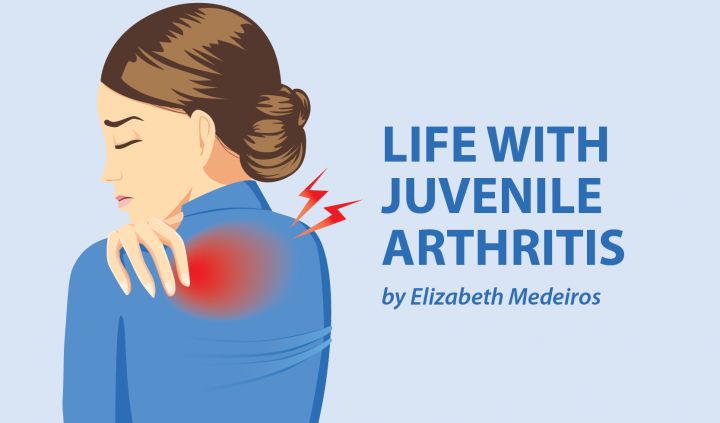For the most part, I wasn’t too interested in sports as a kid. At least, not until I took ice skating classes. For a few years, ice skating was one of my favorite activities. It was something I excelled in; I was usually one of the best in my class.
But two years into lessons, I had a horrible juvenile arthritis (JA) flare that landed me in the hospital. After that, my parents were hesitant to allow me to ice skate or play other sports again. As a result, I became weaker and uninspired to exercise.
It can be extremely hard to motivate yourself to exercise when you have chronic pain. Kids with juvenile arthritis may be tempted to curl up on the couch rather than play after a long day at school or physical therapy sessions. But while making time for rest is important, so is time to build up strength and flexibility. Kids with arthritis benefit from regular exercise. The following activities are great ways to keep kids up and moving.
Family activities
Help encourage your child by exercising as a family. Family walks after dinner or bike rides on the weekend can be a great way to sneak in some fun exercise. Someone doing the activities with you is a motivator, and it makes it so much more fun and engaging.
Keep swimming
Swimming is an excellent form of exercise for children with arthritis. Working out in water is less stressful on the joints, and some children may even be prescribed hydrotherapy. Bringing your child to a local pool can offer an excellent workout, whether they want to swim laps or just splash around. Your teen may be interested in checking out water aerobics or Zumba classes. While these classes normally can be intense, doing them in water helps keep things low-impact. Of course, always consult your child’s rheumatologist before joining a class.
Yoga
I admit it: When I was a kid, I hated when people suggested I try yoga. But it can be a great option for those with JA. Yoga poses can help one learn to relax and stretch the muscles, which is valuable to anyone with arthritis. Teens, in particular, may be attracted to this sophisticated, trending activity. That said, your child should not begin yoga without approval from your child’s pediatric rheumatologist and physical therapist.
It can be hard to find a yoga instructor who has dealt with juvenile arthritis. Funnily enough, I know a lot of young people who actually participate in yoga at senior centers because the classes are slower and adapted to people who aren’t so flexible! Some kids might adore this idea. Others may prefer to find classes with other kids and teens, which are commonly available at places like the YMCA. In that situation, it’s smart to let the teacher know and to encourage your child not to feel pressure to keep up with the class. After all, yoga is about gradual stretching.
Team sports
Many kids love sports and want the experience of playing on a team. While you may not think it’s such a good idea, kids with JA can benefit from sports. As long as the rheumatologist, physical therapist, and coach are on board, and your child’s arthritis seems to be stable, there’s no need to keep them off the playing field. It might take some extra precautions, such as knee braces or only playing certain positions. There also may be times your child needs to unexpectedly sit out of a game due to increased arthritis activity. But as long as you find a team with an understanding coach, certain sports shouldn’t be an issue.
When rest is best
Many kids with arthritis regularly have good and bad pain days. Encourage your child to learn how to take things at their own pace, and to say no when they are in too much pain (such as saying no to a yoga pose that pushes them too far). It’s OK to go slow. What matters most is your child finds an activity that they enjoy doing. As long as they enjoy the activity, they will be motivated to keep moving!
While I never did ice skate again, I did eventually become active. There were entire summers I spent riding my bike all day. I was lucky enough to go to a high school with a pool, and over the winter, I spent an hour a few times a week doing laps or playing volleyball. While juvenile arthritis flares sometimes limited how much time I spent doing these activities, they were things I always looked forward to doing once I was feeling better. And looking forward to joining in with peers for exercise is a great motivator for kids to keep moving.
***
Note: Juvenile Arthritis News is strictly a news and information website about the disease. It does not provide medical advice, diagnosis, or treatment. This content is not intended to be a substitute for professional medical advice, diagnosis, or treatment. Always seek the advice of your physician or other qualified health provider with any questions you may have regarding a medical condition. Never disregard professional medical advice or delay in seeking it because of something you have read on this website. The opinions expressed in this column are not those of Juvenile Arthritis News, or its parent company, BioNews Services, and are intended to spark discussion about issues pertaining to juvenile arthritis.


